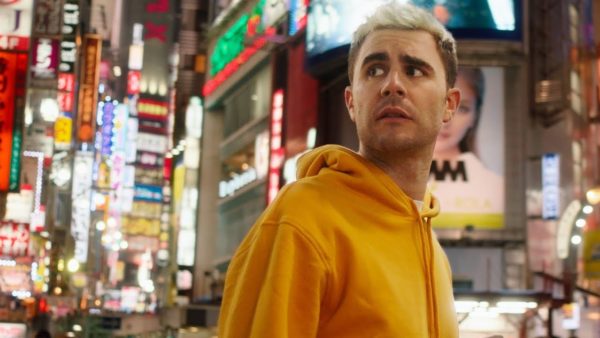
Search for lenses, articles and help
OSCAR-winning short documentary about the last free music instrument repair workshop for the schoolchildren of LA.
Lens/Camera Information
Lens series: Anamorphic/i S35
Focus lengths: 25, 40, 50, 65 macro, 100, 180
2nd Lens series: Cine Varotal 25-250mm
Camera: ARRI Alexa Mini
Format: Digital
Director of Photography: David Feeney-Mosier
Instagram
Agent
Production Information
Production: The Last Repair Shop
Production Company: Breakwater Studios
Post Production Company: Breakwater Studios
Producers: Ben Proudfoot, Kris Bowers, Jeremy Lambert, Josh Rosenberg
Directors: Ben Proudfoot, Kris Bowers
Colourist: Stephen Derluguian
Awards
Academy Award for Best Documentary Short Film 2024
DOP David Feeney-Mosier on the lens of his choice:
For the short documentary “The Last Repair Shop” we used the Cooke 2x Anamorphics as well as the 25-250 Varotol zoom with an anamorphic back.
After scouting the primary location, the LAUSD Musical Instrument Repair shop in downtown LA, with directors Ben Proudfoot and Kris Bowers, we were amazed at how trapped in time the space felt. It seemed relatively unchanged from the 1970s/80s, with a heavy, warm patina throughout. The ceiling-high shelves that filled the shop were lined with leather cases, brass instruments, and the rich mahogany tones of the string instruments. The work stations were almost entirely wood as well, and lit primarily with tungsten work lights (we generally kept the overhead fluorescents off). It felt quite instinctual to embrace the darker, warmer tones of the repair shop and pair them with Cooke lenses, which have a beautiful, innate warmth to them. I believe the warm hues also contributed on an emotional level. We wanted the shop to feel intimate, cozy, and imbued with hope. Although we never explicitly spoke about it in these terms, I always thought of it a bit like Santa’s workshop. The small team of employees at the shop, who are the characters in our film, work tirelessly at this nearly Sisyphean task of repairing something like 80,000 instruments. Its never-ending. But you can tell everyone there is truly working from a place of love and care. The passion of the craft, and the importance of what these repairs mean for the students- its all palpable when you see them working. We didn’t want the shop to feel too cool or industrial, we wanted it to feel rich and comforting. We leaned into a darker look, with pockets of warm light. We wanted to literally and figuratively shine a light on the employees hard work.
The decision to shoot anamorphic widescreen also felt quite instinctual. We approached this doc as we would a narrative film. We wanted it to have a slightly elevated and composed feel, still naturalistic but just a degree removed from reality. And the mild distortion and shallower depth of field inherent in anamorphics worked very well to that effect. I’ve always enjoyed that kind of hybridization of formats. The wider aspect ratio also meant we could see more of the shop, feel more of the instruments on the periphery. We could find interesting wide shots in which our characters could be working in the corners of the frame, which I felt lent some pathos to them. They were just focused on the minutia of their task, unencumbered by the mountain of broken instruments behind them. Amongst the darkness of the frame, in the little spotlight of their work desk, it felt like they were burning the midnight oil, so to speak. Being able to shoot at a t2.3 if necessary and have an image that still resolved well was another wonderful asset of the Cooke anamorphics. Although as I mentioned we approached the film like it was a traditional narrative piece, we were staffed like a documentary, which meant we had few lights, and a very small crew. For a lot of the scenes at the work desks we were lighting exclusively with practical work lamps with a 40w or 60w bulb, sometimes supplemented with a small movie light off to the side. In those instance the speed of the lenses was very helpful. And even for the interviews it was nice to set our key light to a lower stop, and be able to keep the textures of the dark shop in the background.
We shot all interviews on the 65mm macro lens with an interrotron setup. The subject was close, generally about 3’6” from lens. Ben and Kris loved the intimacy and confessional quality of having such a tight, straight to lens look for these segments.
Overall, the soft, warm feel of the Cooke anamorphics was instrumental in creating the look of the film.